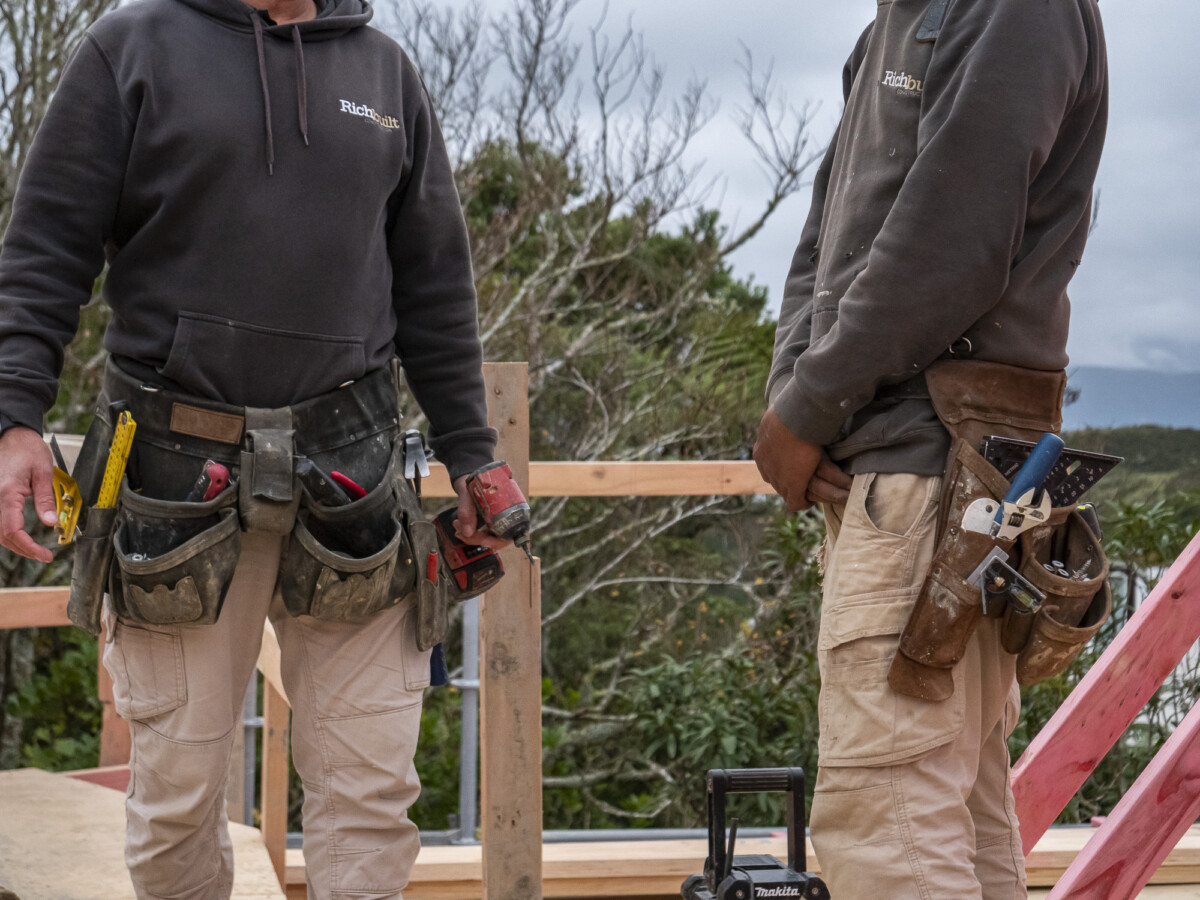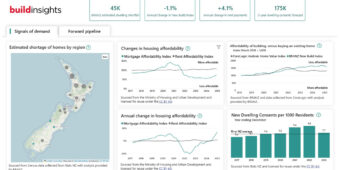Navigating premium increases
22 May 2023, Insurance, Learn, Prove Your Know How

Weather events, inflation and supply constraints (among others) have increased the cost of reinsurance across New Zealand. If your premiums look likely to go up, these tips from BuiltIn’s in-house expert Ben Rickard could save you money
The year 2023 has already seen the largest volume of weather- related insurance claims in New Zealand’s history, with claim losses exceeding 2022 – which itself was a record year. The increasing number and severity of weather events is one reason that insurance costs are rising. Other factors include inflation and supply chain constraints. Reinstatement work is taking longer and costing more. These factors are contributing to significant increases in the cost of reinsurance for New Zealand insurers, which will have to be passed on to customers.
An increase in the Earthquake Commission levy, taking the minimum on a residential house from $300 to $480 per year, is also continuing to flow through to customers’ overall policy costs.
While car windscreen cover remains free (no excess) from almost all insurers, the increasing sophistication of embedded sensors and other technology make replacing them more and more expensive. Longer lead times and greater costs for parts coming to New Zealand are also affecting repair costs. The market value of vehicles is also increasing as prices in the second-hand car market get a boost following the recent floods.
The theft of trade tools has been a constant driver of losses on the tools insurance portfolio and there is no sign of this decreasing over the next few years.
Are you under insured?
As inflation increases, replacement costs rise and sum insured values need to increase accordingly to ensure that your assets are adequately insured. It may be worth re-evaluating these more frequently than just once a year at renewal time. It is not advisable to underinsure your assets to reduce premium costs, as this could backfire big time in the event of a large or total loss.
Negotiating rate increases
Our job is to get our clients the best possible cover for the best possible price. Where increases are required, we will work to keep these to a minimum and seek additional coverage benefits to offset them, as we prefer not to water down policy coverage in return for lower rates. As a member of the Steadfast Group, we benefit from the negotiating power of Australasia’s largest network of insurance brokers, with 53 brokers nationwide and over $11.5bn of annual premium spend to negotiate with.
Affordability
If you are experiencing cashflow issues, or want to manage your cashflow prudently in 2023, you may want to consider paying your insurance in monthly instalments rather than all at once. While this incurs an additional cost in the form of interest charged by the premium funding provider, it spreads the cost and can take the squeeze out of the renewal month. We are seeing a significant rise in this option being taken by customers.
We can also look to move policy renewal dates around, to spread them throughout the year rather than all being lumped into one period.
Vehicles
Expected increase:
It would not be unexpected to see rises of 10-20% on vehicle insurance premiums in 2023, across both private and commercial vehicles. This is in addition to any rise from increasing sums insured.
Loss reduction:
- Consider installing security features such as an alarm or immobiliser. A steering wheel lock will deter potential thieves.
- Ensure vehicles are locked at all times and garaged overnight where possible.
- Install a GPS/GSM tracker, such as www.black-int.com.
- Install towball locks and/or wheel clamps on trailers.
- Avoid distracted driving: don’t use your phone or other devices while driving.
- Keep a safe distance from the vehicle in front of you, especially in bad weather.
- Avoid aggressive driving: don’t tailgate, cut off other drivers or go too fast.
- Always be aware of your surroundings, use your mirrors.
Premium reduction:
- Request a named drivers-only discount.
- Downgrade to third party or third party, fire & theft cover.
Liability
Expected increase:
There is likely to be a relatively modest, inflation-adjusted increase in liability premiums. However, insurers are also becoming more targeted in how they rate the risk from different occupations. This means that some trades may experience a larger increase than others, as the claim losses coming from their profession are higher than other trades.
Loss reduction:
Visit our resource library/blog for claim examples and tips for how to reduce claims across various trades: builtininsurance.co.nz/articles.
- Premium reduction:
- Reduce cover amounts (with caution).
- Make sure the estimated turnover (and number of staff) your premium is based upon is as accurate as possible.
- Look for deals available from trade associations or merchant loyalty programmes (eg, Placemakers Plus).
Tools and equipment
Expected increase:
An increase is likely, due to both inflation and the continued frequency and cost of claims. This could be in the region of 10-15%.
Loss reduction:
- Do not leave tools in vehicles overnight when they are parked in the open (eg, roadside or driveway).
- Lock your vehicle at all times.
- Install heavy security storage boxes, such as: www.armorgard.co.nz/cat/equipment-and-tool-storage.
- Install GPS/GSM tracking chips, such as: www.black-int.com.
- Mark all your tools with a clearly identifiable brand/colour.
- Engrave your tools with your contact details (eg, mobile number).
- Keep a register of all your tools, including serial numbers, in case of recovery by the Police.
Premium reduction:
- Install Armorgard lock boxes for a lower excess in the event of a claim (Builtin only).
- Look for deals available from trade associations or merchant loyalty programmes (eg, PlaceMakers Plus).
Contract works, property and buildings
Expected increase:
One insurer has flagged an average increase on house insurance of 32% and on contents cover of 26%. However, there will be a wide range of individual variations due to localised risk factors such as flood, earthquake, landslip and coastal inundation.
We expect to see a higher-than-inflation increase in contract works insurance premiums, perhaps in the region of 10-15%. This is due to the general market conditions outlined above, including construction cost inflation and reinsurance costs.
Loss reduction:
- Minimise delays during construction by scheduling the job in detail and ensure your subbies keep to their booked times. The longer the job takes the greater the risk of a claim.
- Don’t leave valuable items on site longer than necessary.
- Install a security alarm.
- Identify and eliminate hazards associated with electrical fires, such as from lithium batteries, cables, switchboards, control panels, lighting appliances and equipment. Have a maintenance programme and safety checklists, smoke alarms and fire extinguishers readily available.
- Ask neighbours and tradespeople working at nearby sites to keep an eye out for suspicious behaviour and to record vehicle details.
- Weatherproof the site and exposed materials.
Premium reduction:
Be as accurate as possible with your build timeframes – the longer the project takes, the more the insurance costs. Extensions to the policy cost money too and it is usually much more cost effective to add on an extra month or two when you first take it out rather than paying for extensions later on.
The information presented in this article is general in nature and not intended to be advice for individual situations. You should speak to an expert about your specific circumstances and needs.
Builtin are New Zealand’s trade insurance experts. For more information visit www.builtin.co.nz, email Ben Rickard at ben@builtin.co.nz or call him on 0800 BUILTIN.
Register to earn LBP Points Sign in
1 Comment
Leave a Reply
You must be logged in to post a comment.




all good